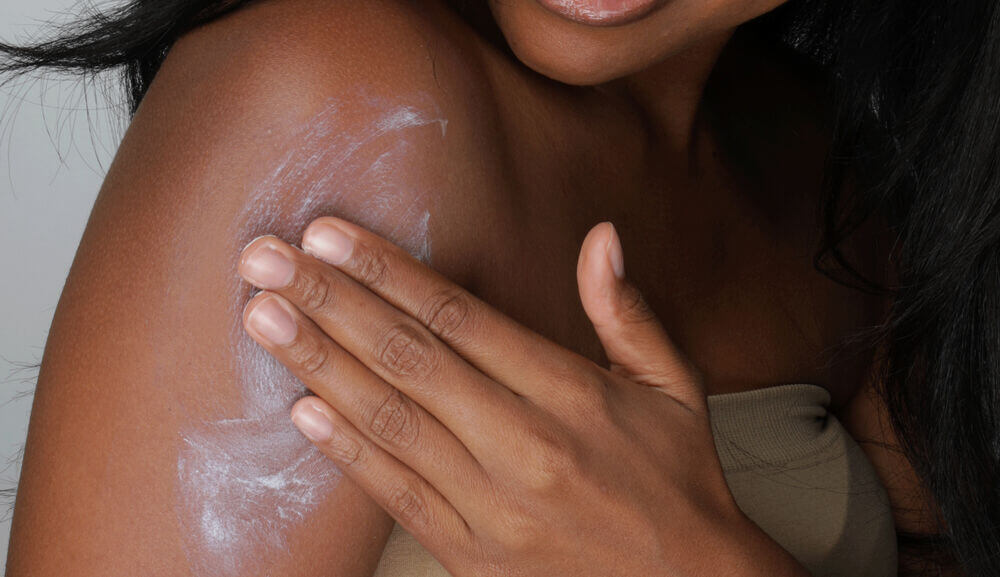
Introduction: Why Your Dry Skin Needs Special Sun Protection
Sun exposure is one of the leading causes of premature aging, pigmentation, and long-term skin damage. While many people focus on SPF strength and UVA/UVB protection, those with dry skin need to go a step further. Dry skin, which lacks moisture and can feel rough or tight, is more prone to irritation and flaking when exposed to the sun’s harsh rays. This makes choosing the right sunblock not just a cosmetic choice but a crucial part of maintaining your skin’s overall health and barrier function.
To meet both protection and hydration needs, sunblock for dry skin must combine powerful SPF ingredients with deeply nourishing components like hyaluronic acid, ceramides, and essential oils. This guide explores how you can shield your skin from harmful sun exposure without compromising on moisture or comfort.
The Science of Sun Damage and Dry Skin
The sun emits both UVA and UVB rays. UVA rays penetrate deeply into the skin, causing premature aging and long-term cellular damage, while UVB rays are primarily responsible for sunburn. For individuals with dry skin, exposure to either type of ray can exacerbate existing dryness and accelerate dehydration. Unlike oily skin, dry skin doesn’t produce enough natural oils to protect itself, making it vulnerable to cracks, redness, and sensitivity when exposed to environmental stressors like sunlight and wind.
The skin’s natural lipid barrier, which retains moisture and defends against pollutants, is often compromised in dry skin types. This means sunblock for dry skin must serve dual purposes: creating a physical or chemical shield against UV radiation and reinforcing the skin’s ability to retain hydration. A quality product achieves both without clogging pores or leaving a greasy residue.
What Makes a Good Sunblock for Dry Skin?
Not all sunblocks are created equal—especially for dry skin. The best formulas are those that moisturize while protecting and do not contain drying alcohols or irritating fragrances. Key ingredients to look for include:
-
Hyaluronic Acid: Helps retain water in the skin, giving it a plump and soft appearance.
-
Glycerin: A natural humectant that draws moisture from the air into your skin.
-
Ceramides: Lipid molecules that strengthen the skin barrier and lock in hydration.
-
Shea Butter or Jojoba Oil: Natural emollients that soothe and soften dry patches.
-
Niacinamide: A multi-functional ingredient that improves skin elasticity and reduces water loss.
Equally important is the texture. Cream-based sunblocks are more suitable for dry skin than gel or spray formats. A good sunblock should glide on easily and absorb well, leaving a dewy—not greasy—finish.
How to Properly Apply Sunblock on Dry Skin
Proper application plays a major role in how effective your sunblock is. Start with a clean, moisturized face. You don’t need to skip moisturizer—just choose a lightweight one if your sunblock already has hydrating ingredients. Use at least a nickel-sized amount for the face and a shot-glass full for the body. Apply it 15 to 30 minutes before sun exposure, and reapply every 2 hours, especially if you’re sweating or swimming.
Layering also matters. If you wear makeup, let the sunblock settle for a few minutes before applying primer or foundation. You can also opt for makeup products that include SPF, though they shouldn’t replace your primary sunblock.
Another pro tip: always extend your application to your neck, ears, and the back of your hands—areas that are commonly neglected but highly exposed to the sun.
Top Mistakes to Avoid When Choosing a Sunblock
Many people unknowingly use sun protection that worsens their dry skin condition. Here are some common pitfalls:
-
Using alcohol-based formulas: These evaporate quickly and can strip the skin of natural oils.
-
Skipping sunblock on cloudy days: UV rays still penetrate cloud cover and can damage skin.
-
Choosing “matte” finishes: These often contain oil-absorbing agents that further dry out the skin.
-
Overusing exfoliants with SPF: Sunscreens with exfoliating acids can irritate dry skin and weaken the barrier.
Instead, focus on nourishing sunblocks with a creamy, emollient texture and an SPF of at least 30 for daily use. If you're traveling or spending long hours outdoors, an SPF 50 or higher is ideal.
2025’s Best Practices for Dry Skin and Sun Care
With the beauty industry evolving, 2025 has brought more advanced, skin-specific sun protection options. Many newer sunblocks for dry skin now incorporate adaptive hydration technology, which adjusts to your skin’s moisture levels throughout the day. Others include antioxidants like Vitamin E and green tea extract to fight free radicals caused by sun exposure.
There’s also a growing demand for hybrid products that serve as both sunblock and skincare. These offer built-in moisturizing benefits, reducing the need for multiple layers. Some brands have started offering tinted sunblocks, which blend seamlessly into the skin and offer light coverage along with protection.
Lastly, always check for broad-spectrum protection, which ensures coverage from both UVA and UVB rays. Products labeled “broad-spectrum” are critical for comprehensive defense, especially for sensitive, dry skin types.
Conclusion: Protection Meets Hydration
Dry skin requires more than just SPF—it needs a holistic approach to protection that includes long-lasting hydration and skin barrier support. Choosing the right sunblock can make a significant difference in the health and comfort of your skin. In 2025, with innovations in skincare and sun protection technology, finding a sunblock for dry skin that delivers on both fronts has never been easier.
Start with trusted ingredients, pay attention to your application routine, and avoid formulas that aggravate dryness. When your skin is protected and nourished, it not only feels better—it looks radiant and healthy every day, rain or shine.
Comments on “Sunblock for Dry Skin: The Ultimate Hydrating Protection Guide for 2025”